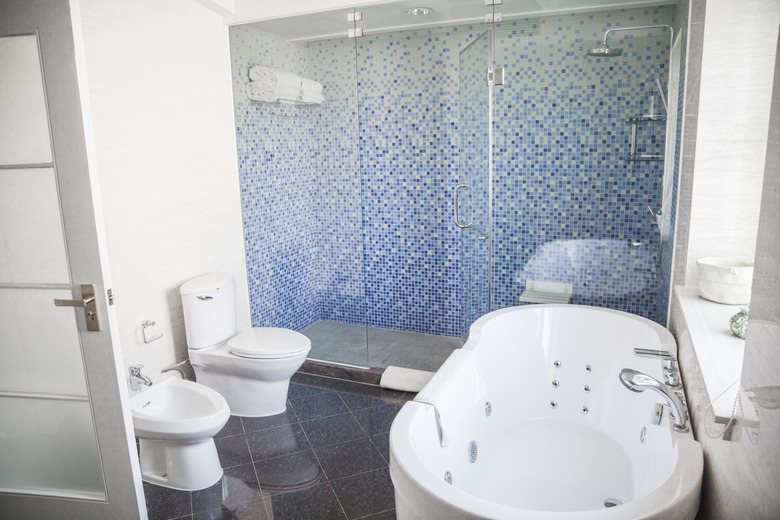What Kind Of Mortar Do You Use In A Shower Pan?
A shower pan — the piece that forms the bottom of the shower or bathtub — has to rest on top of a concrete layer that can support the bottom piece. When installed correctly, a waterproof barrier is created between the shower bottom and the underlying layers.
A mortar mix provides the best base because it's very shapable, allowing the owner to fit whatever type of shower or bath pan into the supportive base. There are a few types of mortar to consider when building a shower pan.
Tip
The ideal mortar for a shower pan is a mix of standard cement mix with sand and Portland cement. This type of mortar creates a great water-resistant barrier that can support the weight of the shower unit.
Cement, Concrete and Mortar Differences
Cement, Concrete and Mortar Differences
While cement, concrete and mortar may be interchangeable as general terms, there are real differences between them. Weaver's Ace Hardware explains that mortar is unique because it does not contain the large aggregates that cement or concrete can, which might reduce its overall strength, but makes it more moldable and allows it to better bond to other surfaces.
The ideal mortar is a mix of standard cement mix with sand and Portland cement, which creates a great water-resistant barrier that can support the weight of the shower unit. Quikrete explains that it works well for shower pans, being a mix of Portland cement, graded sand and other proprietary ingredients. Quikrete is contractor-grade, though it can be hand-mixed for your home project.
Shower Pan Installation Considerations
Shower Pan
Installation Considerations
When considering installation of a shower pan, you'll want to make sure the space can support the entire weight of the project. It's necessary to install basic support at the subfloor level. This might be wire mesh, a paper slip sheet, or both. Understand the reinforcements that exist and be sure to install an appropriate base. The subbase should be supported on a wood frame.
Identify the drain point and the height of the drain. Since the drain needs to be the lowest point, it's important to calculate the slope from drain point to all of the perimeters. A general guideline is 1/4 inch of pitch per linear foot; a greater gradient is absolutely acceptable.
Proper Mortar Mixing
Proper Mortar Mixing
Build a support for the drain flange using loose mortar and then fill it in with dry-mix mortar. The mix can be difficult to balance, but the key is to activate the cement-sand mix without overly wetting it.
It should feel like the type of sand children often use to make a sandcastle. You can also compare it to a snowball. If you can pack it into a ball that can hold its form for a while but then breaks down easily upon touch, it's likely that the mix is the right consistency.
Pack the mix into the base, then smooth it out so that the drain maintains the required angle of pitch. If you're using a preformed shower pan, the manufacturer should provide a recommended thickness for the mortar bed that will sit underneath.
Shower Pan Material
Shower Pan Material
The shower pan that sits on top of this mortar base can be crafted out of a number of materials:
- Acrylic shower pans are created from big pieces of modified
plastic that have been treated with heat and pressure over a mold to preform a
piece that can be set into an existing bathroom setting. - Fiberglass pan settings are made from a polymer resin containing woven
glass fibers, which provide reinforcement. They are an affordable alternative
to other materials but may be more susceptible to stains or scratches. - Tile showers can be incredibly attractive, when time and talent are put into the installation. They provide an upscale look but can introduce a
number of expenses. This tile work also requires extra steps to ensure the
entire build is waterproof and sufficiently supportive. - Composite materials can provide extensive advantages,
but each composite should be evaluated individually on its merits.
